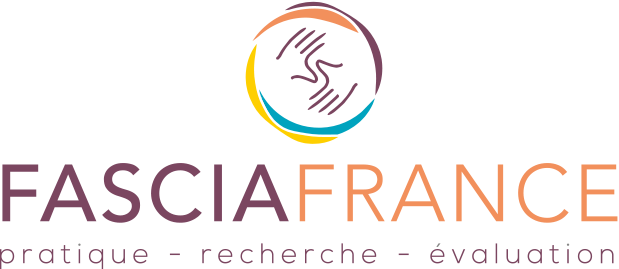Sercu P, PT, Msc, Delaunay L. PT, Msc, European College of Fasciatherapy (Belgium)
Oral presentation : 10th World Congress on Myofascial Pain Syndrome and Fibromyalgia Syndrome – October 4-8, 2017 – Bangalore (India)
Article published in Breakthroughs in Muscular Pain. Research and Practice. Myopain 2017. Editors : SharanD, Samuel R J. Published by Recoup Neuromusculoskeletal Rehabilitation Centre. Bengaluru (India):190-198.
Abstract :
- Goals
Physical pain and emotional suffering are among the interrelated core symptoms of cumulative child maltreatment.
Physical pain can become chronic in such cases. This was found to be highly prevalent among sexually abused women, including cases of intimate partner violence and childhood trauma. Meta-analysis shows that the chronic pain can lead to a functional-somatic syndrome such as fibromyalgia, chronic widespread pain, chronic fatigue syndrome, temporomandibular disorder and irritable bowel syndrome.
Chronic pain must be properly addressed, as many patients still report unsatisfactory pain control despite ongoing treatment. The selection of the therapy – taking into account the pathophysiological mechanisms of pain – and the right timing can result in a successful analgesic outcome .
Expert-based qualitative research suggests that fasciatherapy (according to the Danis Bois method) may positively affect the pathophysiological and pathopsychological aspects of chronic pain through a phenomenologically orientated physiotherapy;
Based on our professional work with traumatized adolescent and adult refugees in Belgium, we carried out a study on the pain reducing effects of fasciatherapy (according to the Danis Bois method). A second goal of this study is to examine if a therapeutical thouch can have a positive effect on traumatized adolescent people, victims of sexual violence.
- Methodology
We selected an intervention group of unaccompanied refugee minors out of Subsaharian Africa. They were girls aged between 14 and 18 years who were all pregnant due to sexual violence. Waiting for childbirth and asylum approval in Belgium, they were living together in a sheltered home and given medico-social care.
They were included in our study after informed consent, also given by their legal supervisor. It took a period of one year of consecutive admissions to the sheltered home to constitute the full intervention group of twenty-six participants. For ethical reasons there was no way to realize a control group
Every participant received 9 or 10 sessions over a period of several months.
Before starting the fasciatherapy sessions, three scales (HSCL-37A, SLE and RATS) showed convincingly that all participants (with no exception) were coping with severe post-traumatic stress syndrome (PTSS) including complaints of acute and chronic pain.
In order to evaluate the presence or absence of pain reduction, the patients were asked to answer the Mosby Pain Rating Scale immediately before and immediately after the fasciatherapeutic session.
As a consequence, our study of pain reduction has to take into account the over all impact of psychotraumatic stress disorder (PTSD), as measured by the three questionnaires used : the Hopkins Symptom Checklist 37A (HSCL-37A), the Stressfull Life Events (SLE) and the Reactions of Adolescents to Traumatic Stress (RATS).
- Results
As can be expected in their evolving refugee situation (positively as well as negatively), the ORS-results generally did not improve during the intervention period, leading to the conclusion that this significant pain reduction was not directly linked to the over all improvement of the situation of the girls. On the contrary, during pregnancy, childbirth and care of the baby, some girls indicated new or increased difficulties.
The Mosby Pain Rating scale offered statistically significant positive results for pain reduction in different body parts as well as for pain intensity. This pain reduction can be attributed to the positive effect of the fasciatherapeutic sessions.
The results of the Session Rating Scale obtained during the intervention period were very positive. The adolescents highly appreciated the therapeutic alliance. Apparently the fasciatherapeutic method did not counteract the development of a positive therapeutic alliance.
Finally, there were no refusals or complaints linked to the therapeutic touching of the girls once their trust was gained and, futhermore, these adolescent women testified to the positive therapeutic effect of the touch in the fasciatherapeutic approach MDB and generally reported this as pleasant.
- Discussion
This clinical study illustrates the suggestion that there is a link between connective tissue and the autonomic nervous sytem that can be seen as the anatomo-physiological link between body and mind. The manual techniques obtain biological and physiological results like muscle tonus reduction, neurovascular modulations and reduction of physical pain. The awareness of these physiological results lead to a different experience of pain, reduction of suffering, feelings of warmth, feelings of existence and feelings of serenity etc that result in the psychological changes. This global result is possible thanks to the original approach of Fasciatherapy and the application of the paradigm of ‘the Sensible’.
- Conclusion
Applying the fasciatherapy (according to the Danis Bois method) in a group of non-accompanied adolescent girls (refugees out of Sub-saharian Africa), statistically significant positive results were obtained in the areas of pain reduction and of building a strong therapeutic alliance. The use of therapeutic touching as applied in fasciatheray MDB was very well accepted by all individuals. For ethical reasons there was no control group, but the results are nonetheless encouraging.

